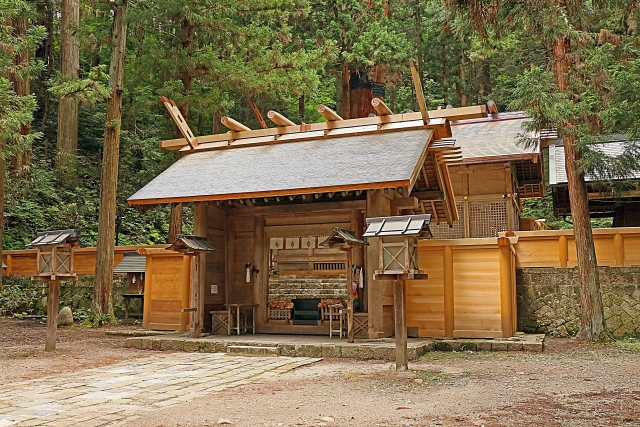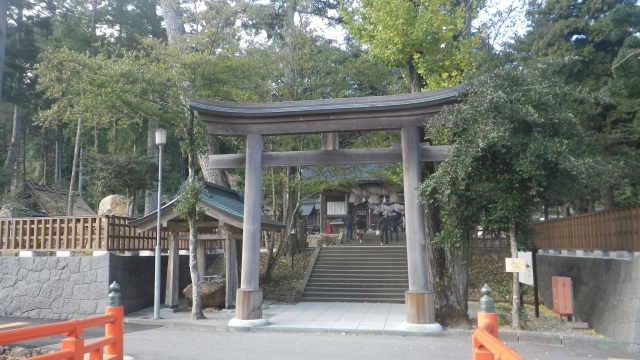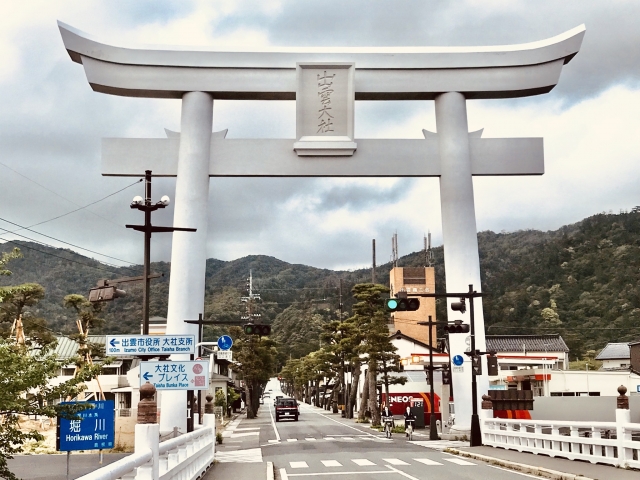Would you like to travel to the most prestigious shrine in Japan? If you were to go, which would you prefer to visit, Ise Jingu Shrine or Izumo Taisha Shrine?
Many foreigners have never been to either shrine and would like to visit both, but it is difficult to say which one.
These two shrines are full of attractions and make me want to go sightseeing at least once.
So, let’s do a little preliminary research on how to visit the shrines, assuming that you will eventually visit both.

Click here to learn Japanese language with the best one-on-one Japanese tutoring lessons in person or online.
Contents
About Ise Jingu
About Ise Jingu Shrine and “Oise pilgrimage
Ise Jingu is a shrine located in Ise City, Mie Prefecture, and its official name is “Jingu. To distinguish it from other shrines, the place name “Jingu of Ise” is sometimes given.
It is generally called “Ise Jingu,” but is sometimes called “Oise-san” or “Ojingu-san” for familiarity. In the Edo period manga “Tokaido Chu Hizakurige” (written by Jippensha Ikku), the main character comes up with the idea of visiting Ise to ward off bad luck.
This Ise visit was popular in the Edo period and was a once-in-a-lifetime dream for many common people. The reason for this was that a large amount of money was needed to pay for the trip to Ise.
The “Ise visit” system was used for this purpose. People who participated in the “Oiseko” program pooled their money together until they had enough to pay for the trip. When the money was collected, a lottery was held and the winners would go to Ise.
The winners were not allowed to draw lots again, so that one day everyone in the group would be able to visit Ise. It is said that the existence of this “Ise-samburi ko” was a major reason why people in the Edo period were able to make the trip at least once in their lifetime, even if they were poor.

The Main Deity of Ise Jingu Shrine
Ise Jingu has two main shrines, Naiku (inner shrine) and Geku (outer shrine).
The Inner Shrine enshrines Amaterasu, the Sun God, and the Outer Shrine enshrines Amaterasu, the Sun God.
He is generally referred to as Amaterasu-Omikami.
The outer shrine enshrines Toyoke-no-Ookami, the deity of Toyoke.
Since the Inner and Outer Shrines are far apart, many people tend to visit only the Inner Shrine.
Officially, however, it is correct to visit the Outer Shrine first and then the Inner Shrine.
About Izumo-taisha Shrine
About Izumo-taisha Shrine and the Kannushi month
Izumo Taisha (Izumo Taisha, Izumo Oyashiro) is a Shinto shrine located in Izumo City, Shimane Prefecture, Japan.
The origin of the lunar calendar month of October, also known as “kaminashi” or “kamizaitsuki,” is well-known for the theory that all the gods in Japan gather at Izumo Taisha, and that there are no gods outside of the Izumo region.
Then, in the Izumo region, October came to be called “kamizaitsuki” or “kamiyugetsuki.

The Gods of Izumo-taisha Shrine
Izumo-taisha enshrines Okuninushi no Okami, the great deity of Izumo. It is also famous for the story of the “White Rabbit of Inaba” in Japanese mythology and as the god of marriage.
The word “en-musubi” means to bring all people together, not just men and women. This deity is combined with Daikokuten, one of the Seven Gods of Good Fortune, but they are originally separate deities.
Daikokuten is originally an Indian deity, while Daikoku-no-Mikoto is a Japanese deity. Daikokuten was originally an Indian deity, but the two were merged because the Japanese readings are “daikoku” and “daikoku”.
How to visit the shrine
The way of worship differs between Ise Jingu Shrine and Izumo Taisha Shrine.
- Ise Jingu: Nireirei Ni-hitate Ichiryoku (two times the most respectful bow, two times the most respectful clap, and once the most respectful bow)
- Izumo-taisha shrine: two rei, four claps, one bow (〃 ・ clap hands four times 〃 )
The number of times hands are clapped differs in this way.
Generally, it is 2, 2, 1 as at Ise Jingu Shrine, but at Izumo-taisha, it is 2, 8, 1 only during the regular festival (imperial festival) and 2, 4, 1 during ordinary times.

Conclusion
The Ise Jingu Shrine, locally known as “Oise-san” (Ise-san), has long been a spiritual center for the Japanese people. Ise Jingu is not a single shrine, but a collective name for 125 shrines and temples centering on the Imperial Grand Shrine “Naiku” and the Toyoke Grand Shrine “Sotogu,” which is officially called “Jingu.
Izumo-taisha enshrines Okuninushi no Mikami, the god of marriage, famous in the myth of the White Hare of Inaba. Okuninushi no Mikoto is known as the god who overcame many hardships and pioneered the creation of the nation, and is also known for the myth of the handing over of the country to Amaterasu.
Izumo-taisha Shrine is said to have been built as a compensation for this handover of the country. In the precincts of the shrine, there is a “Monument of Marriage” that introduces the history of Okuninushi Okami and Suseri Ehime Okami, who reside in Izumo-taisha Shrine.
The two deities overcame various trials and tribulations to nurture their love, and then they exchanged a cup of marriage and formed an eternal bond. This is the reason why they are called “Gods of Marriage. Many people from all over Japan visit Izumo-taisha Shrine to seek a good match.
- The official name of Ise Jingu is “Jingu.
- The Inner Shrine of Ise Jingu enshrines Amaterasu and the Outer Shrine enshrines Toyoke Ookami.
- Izumo Taisha is officially called “Izumo Grand Shrine.
- The deity of Izumo-taisha is Okuninushi no Okami.
- Ise Jingu Shrine is worshipped in the two claps and one bow.
- The Izumo-taisha shrine is worshipped in the manner of two beats and one worship.
Related article:










